Which is more overrated: Sgt. Pepper’s or The White Album?
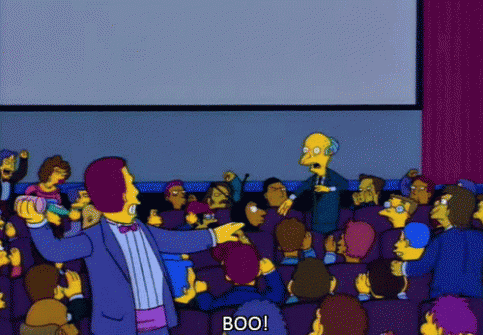
Okay yes but hear me out.
First of all Sgt. Pepper’s Lonely Hearts Club Band is a masterpiece. It’s a work of art and when paired with Strawberry Fields Forever and Penny Lane (the single released in advance of the album that George Martin regretted not hanging onto and including in the LP) there’s little that exceeds it.
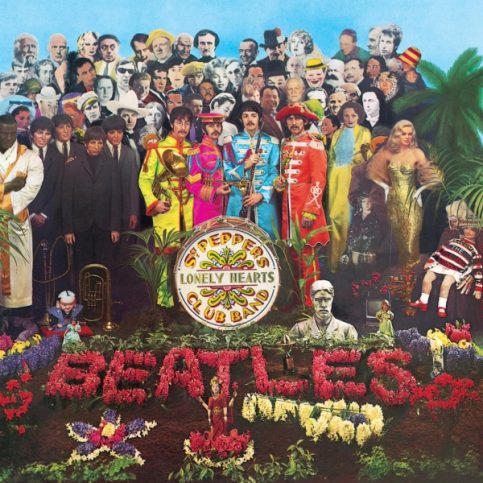
The album was designed with two basic ideas in mind. First, the band had quit touring a year prior (right around the time Revolver was released) and, suddenly free to focus solely on their writing, arranging and their ever-evolving style, the Beatles had the idea to make their next album a sort-of “show on the road” experience. So they created a fake band name (inspired by the underground hippy bands of California) and designed the title track to feature a rousing crowd in the background. In addition they limited the space in between each track considerably, so that each song moved quickly from one to the next, giving the whole record the feel of a live album. It was one of rock’s first “concept” albums and a brilliant little concept at that.
It was also the second idea they had.
The Sgt. Pepper’s concept didn’t come around until halfway through their Feb/March 1967 recording sessions. Before that, their original idea for the album was to release a series of songs about youth, growing up, memories, childhood, etc, both specific and in general. The aforementioned Strawberry Fields Forever and Penny Lane are among the best-realized versions of the idea (not to mention two of the best tracks the band ever did…incidentally the best song they ever did—In My Life—also features a similar theme). Others that explored it are Being for the Benefit of Mr. Kite (about going to the circus, which is very much a “kid” thing), Lucy in the Sky with Diamonds (a song that brings a childhood drawing to life) and She’s Leaving Home (which discusses a teenager who runs away from home). Other songs took the concept a little further and explored “life” in general: Lovely Rita (about falling in love with a meter maid after she writes you a ticket), When I’m Sixty-Four (a song about a child hoping his love will still want to be with him when he’s old and grey) and most famously, A Day in the Life (a song which needs no introduction). Again, the album is a masterpiece, there’s no disputing that.
But there’s a catch.
The album really only works its magic when you listen to it as a whole. You have to start with the Sgt. Pepper’s theme song and not stop (except to turn the record over if you’re a vinyl guy) until the creepy fade out (“Never could see any other way…”) attached to the concentric run-out groove at the end of side two (or attached to the end of A Day in the Life if you’re listening to it on a CD or digital file). The album works as a whole, and even though John later said “other than the two Sgt. Pepper’s songs, there was no concept, those songs could have worked on any other album” the fact is that the thirteen songs on the album they did appear on (plus Strawberry Fields Forever and Penny Lane) work so perfectly in harmony that it’s weird to hear them isolated from the rest of the set.
All of the songs are great, but they lose a little magic when one of them just randomly comes on the radio or pandora. And since this is the age of music-listening where individual songs are prioritized over albums (a reversal from the trend bands like the Beatles helped break from the 1940’s-50’s “singles” era), the songs on Sgt. Pepper’s don’t work the same way just picking up a random Harry Potter book doesn’t work; you have to read the whole series from beginning to end, otherwise it loses it’s magic. It’s enough for me to say—sheepishly—that the songs on Sgt. Pepper’s might be a tad overrated.
As to the White Album: George Martin said to the group that they had enough material to fill one amazing album…and a half. The other half were songs not up to their usual quality. Instead of putting out a double album, Martin wanted one great album and let the rest of the material turn up on B-sides to singles. The band had other ideas, though. There were two primary reasons for not paring down the material to one fourteen-track record. For one, the band was trying to use up their required song-releases that their recording contract demanded. Putting out thirty songs instead of the usual fourteen wasn’t just a two-for-one for the fans, it was a two-for-one for the band too.
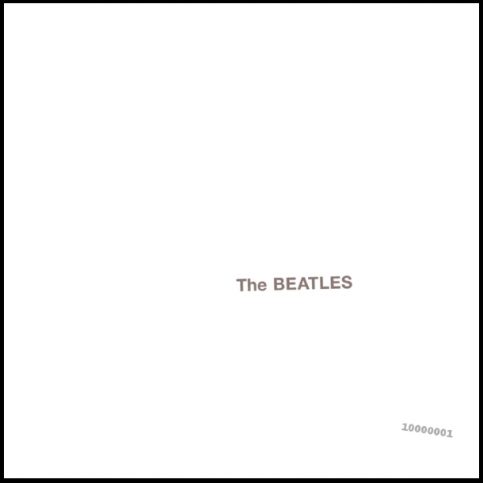
For another reason, as George Harrison put it: “There was a lot of ego in that band.” If you reduce the material to one album, which song gets cut? You can be sure the personal and intimate Julia would not be cut as long as John had a say. Neither would Paul part with Blackbird or the ear-worm Ob-La-Di Ob-La-Da (that he insisted the band record take after take of until it was perfect). George was already chaffing over only being allowed one song on Sgt. Pepper’s (after having three appear on Revolver), so you can be sure his own ego (suppressed though he may have tried to make it) would have made him insist on at least While My Guitar Gentle Weeps and Long Long Long.
So for all the accolades that are heaped on the White Album, it really is dragged down by nonsense songs that ordinarily would not have been cut to vinyl. Having said that, some argue it’s good that it has so many oddball songs because it gave us material that probably never would have appeared on a regular album. As such it’s more of a vanity project than anything (and that is kind of the theme of the album: It’s mostly four solo artists collaborating). I don’t really know if it’s true that we never would have heard the lesser-tracks, though, since the songs they didn’t put on the White Album still ended up being recorded (Junk was done by Paul on his first solo album, Not Guilty turned up on George Harrison’s self-titled album, Child of Nature eventually became Jealous Guy on John’s Imagine record). Not to mention the Beatles loved to recycle unused material on later albums (the song Wait moved from Help to Rubber Soul, for example).
When asked if it should have been reduced to one-disc, Paul would say “It’s great. It sold. It’s the bloody Beatles’ White Album. Shut up!”
Fair enough, but still:
1 Back in the USSR
2 Dear Prudence
3 Ob-La-Di, Ob-La-Da
4 Glass Onion
5 Blackbird
6 Happiness is a Warm Gun
7 Long Long Long
8 Happy Birthday
9 Julia
10 While My Guitar Gently Weeps
11 Sexy Sadie
12 Cry Baby Cry
13 Helter Skelter
14 Good Night
Those are the fourteen I would pick, and I picked them based on their being the strongest fourteen songs on the album that also seemed to have the most sentimental connection to the individual members. Notable omissions are Ringo’s song Don’t Pass Me By (which, fittingly, was passed over for many records before it finally landed on the White Album), Paul’s Mother Nature’s Son (which is great but not quite as timely and significant as Blackbird was in ’68), and John’s Revolution (since the single had already been released and the doo wop album version had the older “count me out…in” line that described John’s conflict about violent protests…a conflict he had decided to oppose by the time the single was released months before the album).
Vanity songs like Why Don’t We Do it in the Road, Savoy Truffle, The Continuing Story of Bungalow Bill could have ended up as B-sides or maybe reappeared in a different form on the aborted Get Back album. Still they are what they are: Good songs that aren’t up to snuff, and if we’re being honest they kind of drag the album down; not a lot but a tad, and enough to say “The White Album is overrated.”
The real “Best Beatles Album” is Revolver.
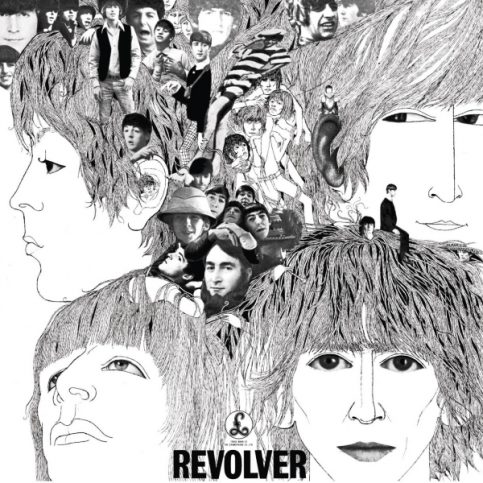
It’s the album nestled in between (the almost flawless) Rubber Soul and Sgt. Pepper’s. Rubber Soul was the album that inspired Beach Boys maestro Brian Wilson to begin work on his band’s greatest album: Pet Sounds (which also turns 50 years old this year, and which will be explored in a different article later). After hearing Pet Sounds, the Beatles felt like a warning shot had been fired from across the Atlantic (Paul said it was one of the best albums he’d ever heard and declared God Only Knows the best love song ever produced), and they responded with Sgt. Peppers (since Revolver was already well into production when Pet Sounds was released). Sgt. Peppers, in turn, pushed Wilson to develop what he called “an album that’s a love letter to God” which would become his psychological undoing: the infamous “Smile” album.
The overlooked album in that back-and-forth is Revolver and it’s the best of the bunch.
Let’s start at the end, because the last song on the album was the first one recorded: Tomorrow Never Knows. Ironically, the title was intended to soften the edge on a very trippy song (arguably the first psychedelic rock song in history). The title is a Ringoism: The witty drummer often had odd little nonsense sayings that the others found hilarious (A Hard Day’s Night was another famous one). During one interview in 1965, Ringo told the story of a fan sneaking up behind him and cutting a bit of his hair off. The interviewer was stunned, but Ringo just shrugged it off and said “What can you say?” which John repeated for emphasis, and then Ringo added “tomorrow never knows” like it was a perfectly cromulent thing to say in that moment. John laughed audibly in the interview and I guess the phrase stuck in his brain. It’s ironic now, though, because if you don’t know the title is just a silly nothing-saying, you might read some mystery into it. Tomorrow Never Knows certainly sounds mysterious, no? And when paired with the lyrics, music, and production techniques used, it becomes the perfect other-worldly title to such an other-worldly song.
The lyrics were inspired by John’s reading of Timothy Leary. Leary taught that the Tibetan Book of the Dead was the key to unlocking the full potential of LSD. Just “turn off your mind, relax and float downstream……lay down all thoughts, surrender to the void…” John recorded himself chanting the words in the book, the took some LSD and played the recording back. The experience was intense and quickly developed into one of the band’s most creative songs. He told George Martin (the Beatles producer who helped bring their songs to life, often in groundbreaking ways) that he wanted the song to sound like monks chanting from a mountain top. To achieve this Martin filtered John’s voice through a Leslie speaker (typically, or at least conventionally used with pipe organs):
A Leslie speaker is a rotating speaker, a Hammond console, and the speed at which it rotates can be varied according to a knob on the control. By putting his voice through that and then recoding it again, you got a kind of intermittent vibrato effect, which is what we hear on Tomorrow Never Knows. I don’t think anyone had done that before.
-George Martin
But while Lennon’s voice and almost-unsettling lyrics are the bread and butter of the song, the real delights belong to Paul and Ringo.
Ringo’s drumming is unlike anything ever heard before. Typically Ringo held to the philosophy that the drumming should only accentuate the singing, not overwhelm it. Whenever he allowed himself a little flourish, it would come during moments when someone wasn’t singing. On this song, however, he banged out a thunderous beat (complimented by constant crashing cymbals) that worked perfectly in tandem with John’s almost-monotone delivery. It’s amazing and one more reason why he is rock’s greatest drummer/innovator.
Paul contributed in a different way; actually he contributed in three: First there was his bass playing. He moved closer to Ringo in order to match his steady drum rhythm with his boom-boom bass playing. It gives the song a really heavy undercurrent. Second was his piercing guitar solo (which was added weeks later). It is thought to have been an unused take intended for George’s Taxman song. Paul played it again and this time had Martin reverse the audio. The effect was unique and just off enough to be right at home with the song. His third contribution was his idea to use “tape looping” (where recorded sounds could be sped up or slowed down to become different sounds entirely). The sound effect of birds chirping, for example, is actually Paul saying “ha haa” a few times. When sped up it sounds like seagulls. Paul told everyone to go home and record various sounds and bring them back to the studio the next day. From those many recordings Martin picked sixteen that appear throughout.
The song isn’t one that most immediately jump to when they think of their favorite Beatles songs, but without a doubt it is one of their most inventive and original recordings. And unlike later dips into Avant Garde (like with Revolution 9), this one holds up as a brilliant song worth listening to again and again.
Probably the second most famous track on the album is Eleanor Rigby (pardon the poor quality video, EMI has been taking down Beatles videos on YouTube like gangbusters for about a year now). With Rubber Soul the band experimented with a few songs that weren’t really “love” songs. Most pop songs, after all, are either about wanting a girl, getting a girl, having a girl, or losing a girl. But after years of singing about girls with diamond rings and so on, Lennon and McCartney decided to branch out. Rubber Soul was just the tip of the iceberg with songs like Nowhere Man and The Word (the first song about love as a concept, as opposed to “being” in love or “falling” in love). Of Revolver’s fourteen tracks, the only “traditional” love songs to be found are Here, There and Everywhere (which Brian Wilson called the greatest love song he’d ever heard), George’s I Want to Tell You (about being awkward around the girl of your dreams) and For No One (a song about a relationship falling apart). Other than that, the whole album was a series of pop songs about things pop songs had never been about before.
Eleanor Rigby is about a lonely woman, a lonely priest and the way they both meet each other (when he does her funeral). When you talk about the Beatles, you end up saying “this was the first…” a lot. In this case, Eleanor Rigby is thought to be the first pop song that broached the subject of death in a serious way (there were more light-hearted songs like Leader of the Pack that touched on it too). The haunting refrain of “ah, look at all the lonely people” prevents you from, you know, “having a good time” like pop music was supposed to do. It’s a bold and inventive song, with a few very psycholdelic lyrics tucked away (“Eleanor Rigby…lives in a dream” and “wearing a face that she keeps in a jar by the door”). It never made it past #11 on the American music charts, but in the UK (where avant garde music was a little more acceptable), it spent seven weeks at #1.
Yellow Submarine is certainly the most famous track from the album. Even if a young person has never heard the song before, he or she can probably identify the title as “that silly Beatles song.” And it is. It’s completely silly. It’s the kind of thing you could expect to come from a (very) drug-influenced mind. John and Paul always intended it to be a fun song for kids, but of course, this being the Beatles, people read into the lyrics all kinds of political and social messaging, much to the annoyance of John and amusement of Paul.
But it has become a seminal Beatles track. It’s one of their most well-known tunes (perhaps in spite of itself), a fact that continues to delight Ringo to this present day (he almost always performs it in his concerts, and always to tremendous ovation). Looking at the band’s entire catelogue of songs, the tune almost seems like it would be better suited to the more jovial Sgt. Pepper’s album, but it works here, again in spite of itself, because it’s a silly kids song tucked within an album that explores death, crumbling relationships and heavy (heavy) tripping. Darn it if it’s not a blast to listen to, though.
Paul’s For No One is a personal favorite of mine. As previously mentioned, it’s a musical exploration of a broken relationship (likely Paul’s with Jane Asher). To describe the words makes the song very mundane. “It’s just another broken-hearted love song” you might say. Yet it’s the almost perfect muscianship on display that elevates it to being one of the best Paul ever recorded. And it’s not just another broken-hearted love song. The lyrics are terribly tragic with very little rhyming. Instead it’s just a bit of poetry. Lines such as “You find that all her words of kindness linger on, when she no longer needs you” and “You want her, you need her, and yet you don’t believe her when she says her love is dead, you think she needs you” stand out, especially.
But it’s the title refrain that takes the cake: “And in her eyes, you see nothing, no sign of love behind the tears; cried for no one, a love that should have lasted years.” He looks into the eyes of the woman he loves but finds no love in return. She’s crying because they’re fighting (and slowly breaking up) but as he says, she’s crying “for no one.” It’s insincere. It’s hollow. It’s a tragedy because the love “should have lasted years.” Yes, it’s a “love song” on an album largely devoid of them, but it’s lyrically very deep as you go into the mind of a person in denial. It’s very original for song of that kind (and the french horn solo is amazing, done apparently one one take).
Though not included on the Revolver album, Rain is certainly a “Revolver” song. It was recorded during the Revovler sessions and the only reason it wasn’t on the album was because British albums had fourteen songs and no advanced singles were allowed on an LP (for up to a year after release). Rain was considered strong enough for a single (paired with Paperback Writer, another song right at home of an album full of songs about everything but romance) so it was, for a long time, always considered and examined separately from the other Revolver tracks. But it is Revolverthrough and through.
The lyrics and the “story” of the song is simple enough. The Beatles had visited Australia and, upon exiting the plane, they encountered what they said was the heaviest rain they’d ever seen. Everyone around them was complaining about the weather for the duration of the trip so John and Paul sat down to write a song about rain that didn’t make it out to be the worst thing in the world. In more conventional hands the lyrics would not have amounted to much of anything, but in 1966 the Beatles were breaking new ground almost daily in the studio.
There’s a heavy bit of experimentation going on with the song, since by the time it was recorded Tomorrow Never Knows had already been done and the band was eager to keep pushing the envelope. By sheer accident John stumbled upon the song’s signature moment. He had taken the tape of the day’s recording home to listen to and—being stoned out of his gourd on marijuana—he somehow reversed it so that it played backwards. He sat there, transfixed and decided that they needed to incorporate the backwards sounds and lyrics into the song, properly. At the end of the song, the opening lyrics are repeated, backwards, creating a spooky effect. It’s not so easily done with digital music, but back then you could manually spin the record the opposite way and hear the (wobbly) lyrics played the “right” way. After hearing the sound and how well it worked, George Martin noted with some exasperation “they insisted everything be played backwards from then on, just to hear how it sounded.”
Other experimentation included the use of speed: The rhythm track was intentionally recorded at a faster tempo than the vocals, and then electronically slowed down, giving it a dream-like quality. Lennon’s voice was also slowed down to match Ringo’s drumming. And speaking of, Ringo himself says this is his finest drum performance and that’s hard to argue:
I think it’s the best out of all the records I’ve ever made. Rain blows me away…I know me and I know my playing…and then there’s Rain. The drums became a giant drum kit… We got a big, ponderous, thunderous backing and then we worked on top of that as normal, so that it didn’t sound like a slowed-down thing, it just had a big ominous noise to it. It was nice, I really enjoyed that one.
– Ringo
Time permits a more detailed discussion of the rest of the Revolver album, but a few other songs stand out that deserve at least a passing mention.
George really hit the ground running with his Sitar playing on the track Love you To. He had first debuted the instrument on the Rubber Soul album on John’s Norwegian Wood, and it would become a staple on many of his songs going forward (especially Within You Without You on Sgt. Peppers). The Beatles use of it opened the market for Indian music in the west, a fact that George always took great pride in (one of the few things he allowed himself to take pride in).
Paul’s delightfully peppy Got to Get you into My Life sounds at first glance like a fun rock-n-roll love song, and it is…except the object of his affection wasn’t a girlfriend or a lover, it was Mary Jane: He was singing of his love for marijuana.
John’s I’m Only Sleeping was written in response to the many times he would be late to show up at Abbey Road to record. Paul would go to his house to get him and find John, usually either tripping or stoned, lying in bed. The lyrics are naturally very drug-inspired (“When I’m in the middle of a dream, stay in bed, float up stream…”). At about 45 seconds into the song, George’s guitar solo is teased and (of course) it is backwards! It picks up during the fade out of the song and only lasts for about ten seconds, but apparently it took nine hours for George and George (Harrison and Martin) to get it right so that the backwards sound synced up properly with the other instruments. Also a bit of trivia: At about 1:57, if you are listening with headphones, you can barely make out John saying “yawn Paul!” and then at about 2:00, you hear an audible yawn sound.
She Said She Said and Dr. Robert are the other LSD songs on the album. Although there’s some confusion about who “Dr. Robert” was, one theory is that he was Dr. John Riley, a dentist/friend of the John and Ringo’s who slipped them their first taste of LSD (by putting it in coffee). Considering the profound impact the drug had on John between 1966-1968 (to the point of it almost killing him), if Dr. Robert was John Riley, then it’s very fitting that he get a nod on a very LSD-inspired record.
She Said She Said features lyrics taken from a conversation John overheard at Peter Fonda’s house. The actor, along with members of the Byrds and the Beatles, were tripping on LSD together (except for Paul, who had yet to partake) when Fonda started saying to everyone “I know what it’s like to be dead!” This ticked John off because he was enjoying a perfectly happy trip and apparently the wrong thing said can quickly turn a good trip into a bad one. John snapped back “you’re making me feel like I’ve never been born,” which sounds like sheer nonsense, but there’s a circular quality to it when you think about (death and birth and all that). Naturally John used it in a song and changed the gender from “he said” to “she said” (he would do likewise in Sexy Sadie, as he changed the title character to a woman, though it was about Maharishi).
And then there’s And Your Bird Can Sing. What a multi-layered song this is! The lyrics are cryptic and many interpretations have been offered (some say its John’s discussion of the Beatles rivalry with the Rolling Stones). As far as I am concerned, this song is about LSD…or, more precisely, someone who hadn’t taken it. By the time the Beatles recorded Revolver, three of them had taken the drug; Paul was the lone holdout. Considering how inseparable the band was in those days and how they did everything together, this was a constant annoyance to John (who felt the impact of the drug more than the other two, and who used it the most as songwriting inspiration). Paul would eventually indulge between this album and Sgt. Pepper’s but during the time when he was abstaining, John wrote this song about him.
In the opening lines John says “you don’t get me” in reference to how distant he and Paul were because they had yet to share the LSD experience together. The opening line of the second verse (“you say that you’ve seen seven wonders…”) is lifted from a statement Paul made to John the first time they both got high (thanks to Bob Dylan). Paul grabbed him and said he had figured out the secret of the universe. What was it? “There are seven levels, man.” John found this hilarious, and as with Ringo’s “Tomorrow Never Knows” line, it eventually made its way into a song. The rest of the song repeats the same basic idea “you’ve seen this and got that but you don’t see me and you haven’t got me.” What’s great is that Paul sings harmony throughout the song. He’s singing right next to John, possibly having no idea the song was about him. Or maybe he knew and just didn’t care because it was a great tune?
For its all-out approach to experimentation, its brilliant harmonies, poetic lyrics and genre-breaking songs, Revolver deserves all the praise it gets, and more! Other Beatles fans can hold up their favorite albums, and I will gladly listen to them and enjoy them. But if you ask me which one takes the cake, there’s no question it’s this one.
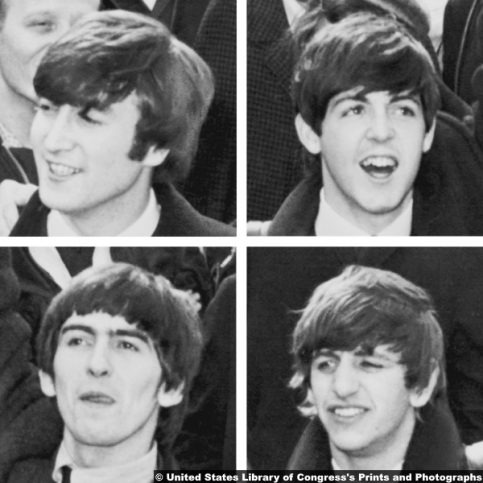
Happy 50th birthday to the greatest rock album ever cut to vinyl.

You must be logged in to post a comment Login